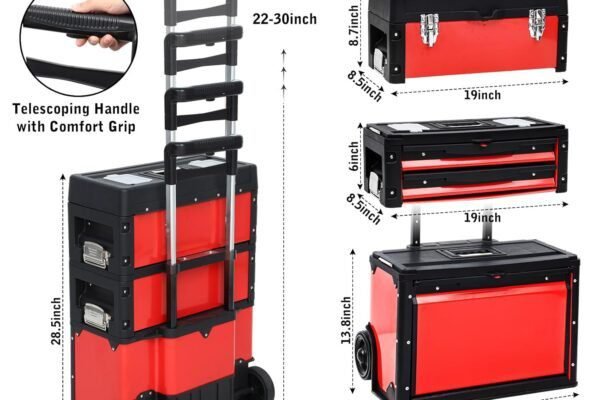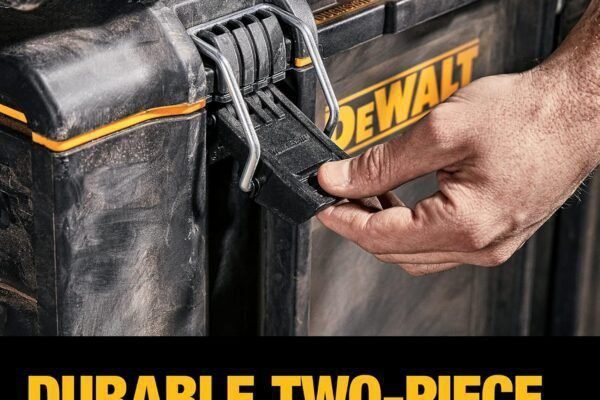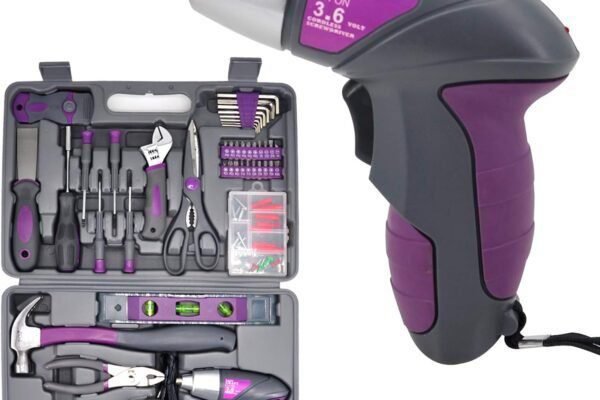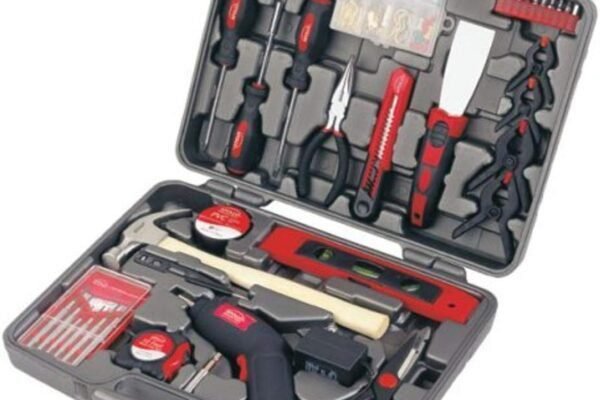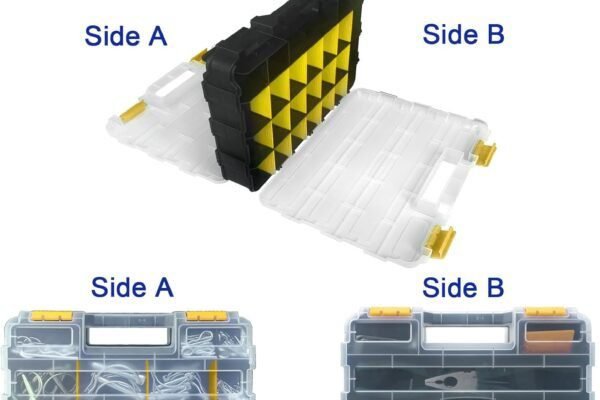December 30, 2023
The Evolution of Power Tools in Construction
Embarking on a journey through the dynamic world of construction, let’s explore the transformative saga of power tools and their pivotal role in reshaping building sites. With each advance in technology, tradespeople have witnessed a dramatic surge in efficiency, safety, and precision. From the humble beginnings of manual labor to the cordless revolutions of today, power tools have not just accelerated the pace of projects but have also redefined the craftsmanship within the industry. Join us in appreciating how these robust instruments have grown to become the backbone of construction, revolutionizing the way structures rise from the ground up.

Early Beginnings of Power Tools in Construction
The transition from hand tools to power tools
In our journey through the annals of construction history, we’ve witnessed a remarkable transformation in the way we build. We’ve moved from solely relying on our muscle power and hand tools to embracing power tools that harness external energy sources. This shift has been revolutionary, paving the way for increased productivity and reducing the physical toll on us. We fondly reminisce about the rhythmic sounds of hammering and sawing, which were hallmarks of construction sites. However, they’ve been replaced by the whir of electric motors that has brought a new rhythm to our craft.
Invention of the electric drill
If we were to pinpoint a milestone that sparked the power tool revolution, it would be the invention of the electric drill. The journey began in 1889 when Wilhelm Fein created the first handheld electric drill. The development of such a tool was a groundbreaking moment for us, as it allowed us to make precise holes in materials with minimal physical effort. We marveled at how this device turned tedious manual labor into a task of finesse and speed.
The impact of the industrial revolution on tool development
The Industrial Revolution played a pivotal role in how we developed power tools. It steered us toward automation and mass production, which, in turn, fueled the evolution of tool design and manufacturing. With steam and electricity becoming more accessible, our tools became increasingly robust and complex. We began to see the potential of mechanization not just in large machinery but in the tools we held in our hands daily.
Post-War Expansion and Innovation
The baby boom and the housing market rush
Following World War II, we faced a baby boom and a corresponding housing market rush. There was an urgent need for rapidly constructed, affordable housing, which placed demands on us to innovate and improve our construction methods. We rose to the challenge, contributing to this boom by incorporating newly advanced power tools into our workflow, significantly increasing our efficiency and enabling us to meet the high demands of the time.
Advancements in power tool technology post-WWII
Post-WWII, the advancements in power tool technology were significant. We saw our tools evolve with better materials and electrical designs, leading to more durable and powerful devices. We celebrated the birth of the circular saw and the jig saw, tools that drastically reduced our cutting time and raised the bar for craftsmanship.
The emergence of professional-grade power tools
As the demand for quality and efficiency grew, so did the emergence of professional-grade power tools. They became a symbol of our commitment to precision and reliability. We witnessed major players in the tool industry pushing the boundaries of what was possible with these tools, creating a market for devices that catered to our specific professional needs.
Battery-Powered vs. Corded Tools
The rise of cordless power tools
Our workspaces truly transformed with the rise of cordless power tools. The freedom to move about without the restrictions of power cords was liberating. Initially, though, we had reservations about their performance and battery life. Yet as technology progressed, these tools not only matched the power of corded tools but often surpassed them in convenience and versatility.
Nickel-Cadmium (NiCd) batteries
The early days of cordless tools were powered by Nickel-Cadmium (NiCd) batteries. We appreciated these batteries for their durability and ability to withstand rough treatment on job sites. Despite their heavier weight and memory effect, NiCd batteries became our companions in portable drilling and driving tasks.
Lithium-Ion (Li-ion) technology and its game-changing properties
When Lithium-Ion (Li-ion) technology entered our world, it was nothing short of a game-changer. We were amazed by the higher energy density, longer lifespans, and reduced weight of these batteries. They allowed us to work longer with less fatigue, and we no longer had to plan our tasks around the availability of power sources.
The Role of Brand Competition in Power Tool Evolution
Market leaders in power tool innovation
As we kept an eye on the power tool market, we noticed that certain brands consistently pushed the envelope. Companies like Milwaukee, DeWalt, and Makita were often at the forefront of innovation, introducing more powerful motors, longer-lasting batteries, and smarter electronics into our tools.
Brand rivalry leading to rapid technological advances
Our tools benefited greatly from the brand rivalry that ensued as companies vied for dominance. We observed a rapid acceleration in technological advances fueled by this competition. It was a race to unveil the next breakthrough that would redefine efficiency and performance, a race that has continually been to our advantage.
Consumer influence on power tool development
The power tool evolution wasn’t just driven by the brands themselves but also strongly influenced by us, the consumers. We voiced our needs for tools that were easier to handle, required less maintenance, and offered greater safety. Our feedback was crucial in shaping the development strategies of these companies, ensuring our tools became better suited to our needs.

Ergonomics and Safety Improvements
The shift toward user-friendly designs
As time passed, we welcomed a shift toward more user-friendly designs in our power tools. We sought comfort and minimal strain in our daily labor, and manufacturers responded by making tools that were easier to handle, lighter, and shaped to fit our grip more naturally. This pursuit of ergonomics helped reduce the risk of repetitive strain injuries, allowing us to work more comfortably for longer periods.
Incorporation of safety features in power tools
Safety became a paramount concern for us on the job site. We cheered the addition of features like automatic shutoffs, electric brakes, and adjustable guards in our power tools. These innovations provided us with a layer of protection against the inherent risks of construction work.
OSHA regulations and their impact on tool design
The Occupational Safety and Health Administration (OSHA) played a critical role in standardizing safety across job sites. OSHA’s regulations prompted us to be more vigilant and pushed manufacturers to design tools with integrated safety features. We collaborated in creating a safer working environment, which was reflected in the power tools we employed.
The Impact of Globalization
Access to international markets and materials
Globalization opened doors for us in ways we couldn’t have imagined in the early days of power tools. Suddenly, we had access to international markets and materials that were previously out of reach. This global marketplace allowed us to source better quality materials at competitive prices, enhancing the tools at our disposal.
Outsourcing production and its effects
We recognized the effects of outsourcing production on our tool choices. Manufacturers looked beyond their borders for cost efficiencies, which often led to lower prices for us. However, we also became aware of the need to balance cost with quality assurance to ensure that our tools could stand up to the rigors of construction work.
International safety and quality standards
International safety and quality standards became a focus for us as globalization advanced. We demanded tools that not only performed well but also adhered to stringent safety protocols. This emphasis on standards ensured a baseline of reliability and quality that we could expect from power tools, regardless of their country of origin.

Technological Advancements in Motor Design
Brushless motors and their efficiency
We were impressed by the introduction of brushless motors in our power tools. With these motors, we saw a leap in efficiency, as they required less maintenance and delivered more power with less heat generation. The enhanced longevity and performance of brushless motors matched our desire for tools that could keep up with the demanding pace of construction.
Compact designs with improved power-to-weight ratios
Another advancement that we appreciated was the move toward more compact designs with improved power-to-weight ratios. We were now able to wield more powerful tools that didn’t weigh us down. This translated to less fatigue and improved maneuverability, reshaping the way we tackled our projects.
Heat dissipation technologies
We also noticed improvements in heat dissipation technologies in our power tools. Manufacturers started incorporating innovative materials and designs to manage overheating, safeguarding both the tools and our safety. Better heat management led to longer tool life and more consistent performance, making our work smoother and more dependable.
Integration of Information Technology
Smart power tools with connectivity features
The integration of information technology brought about smart power tools with connectivity features that amazed us. We began to see tools that could communicate with smartphones and computers, allowing us to adjust settings and monitor battery life. This connectivity promised to revolutionize our workflow and asset management.
Inventory management using tool tracking
Tool tracking became a critical part of our inventory management as connected power tools entered the market. With the press of a button, we could determine the location and status of our tools, reducing losses and optimizing resource allocation. This technology made us more efficient administrators of our equipment.
The advent of tool diagnostics and predictive maintenance
We were particularly excited about the potential for tool diagnostics and predictive maintenance. With smart tools, we could now get real-time data on the condition of our equipment, foresee potential issues, and perform maintenance proactively. This foresight not only saved us time but also averted costly downtime on the job site.

The Rise of Eco-Friendly and Sustainable Tools
Green initiatives in power tool production
We increasingly embraced green initiatives in power tool production, recognizing the importance of sustainability in our industry. Manufacturers started to pay more attention to the environmental impact of their products, leading to the reduction of waste and the improvement of energy efficiency in our tools.
Battery recycling programs
Battery recycling programs became significant to us as we aimed to minimize our environmental footprint. These initiatives by leading power tool companies allowed us to properly dispose of and recycle old batteries, mitigating the hazardous waste that comes from battery disposal.
The shift to renewable energy-powered tools
We have been eager to witness the shift to renewable energy-powered tools. Solar-powered charging stations and tools that can run on alternative energy sources have started to make their mark. This progression not only supports the sustainability of our environment but also promises resilience in our power supply.
Educational and Training Implications
The necessity of training for advanced power tools
With the increasing complexity of power tools, we’ve realized the necessity of training. It’s become essential for us to stay abreast of the latest techniques and safety protocols. This ensures that we have not only the knowledge to use these tools effectively but also an understanding of the risks involved.
Certification programs for specialized tools
We’ve seen the introduction of certification programs for specialized tools. Niche products and advanced equipment often require specialized knowledge, and these certification programs help maintain a high standard of competence among us. They are instrumental in ensuring that the workers who handle such tools do so with confidence and skill.
The role of virtual reality in construction tool training
The role of virtual reality in construction tool training is one we’re beginning to explore with enthusiasm. VR offers a simulated environment where we can practice and perfect our skills without the risks associated with real-life training. This not only enhances the learning experience but also prepares us more thoroughly for the hands-on work to come.


























